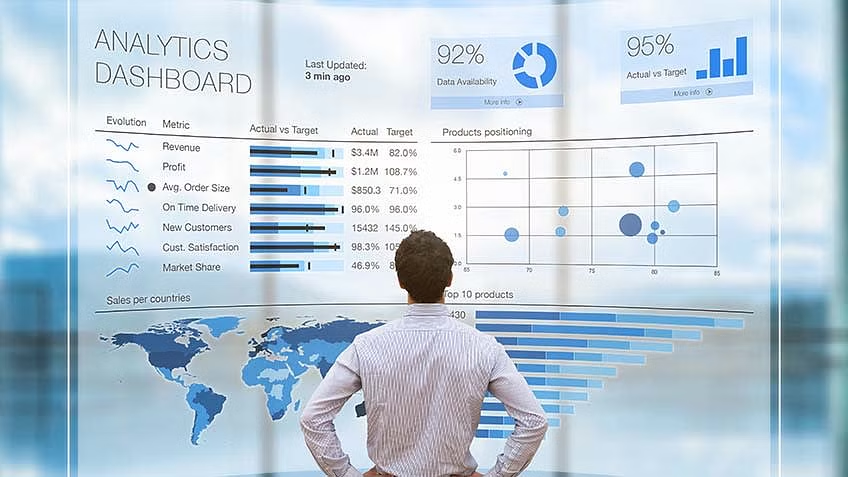For too long, the interpretation of organizational data has resembled a journey undertaken by solitary explorers. They venture into the dense thickets of raw information, emerging months later with hard-won, brilliant insights often delivered via a static report that quickly loses relevance. These “islands of insight” are powerful in their isolation, but they fail to integrate into the daily rhythm of the business, leaving teams to operate on outdated intuition rather than current fact.
To truly understand the power of collective data utilization, we must first change how we view the analytical process itself. Data analysis is not simply bookkeeping; it is cartography. Raw data represents the vast, unexplored territory a wilderness of transactions, logs, and metrics. The analyst, acting as the modern cartographer, uses tools like Power BI to survey the land, plot the coordinates, and illuminate the hidden pathways, ultimately producing a comprehensive, navigable map. Collaborative analysis means ensuring that every team has access to the same, standardized map, allowing them to navigate the demanding business landscape together.
In an era where speed is paramount, Power BI offers the shared digital canvas necessary to transform isolated discovery into unified organizational action.
The Shift from Solitary Scribe to Collaborative Architect
The traditional data workflow forces analysts into the role of the “solitary scribe,” chained to their queries, generating reports for others without engaging in the strategy that follows. This creates bottlenecks and encourages a passive relationship with data: teams simply consume reports rather than challenge or build upon them.
Power BI fundamentally shifts this dynamic. It encourages a move from a centralized, reporting-only function to a dispersed system of shared ownership. This is critical because the most potent insights often arise from the intersection of technical skill and domain knowledge. When a sales manager, who understands quarterly targets, is able to directly interact with a dashboard built by an analyst, the resulting decisions are immediate and powerful. Developing these hybrid skills requires dedicated training, emphasizing that modern analysts need soft skills alongside technical proficiency, a focus clearly reflected in specialized curricula offered by any quality Data Analytics Course today.
The analyst’s role evolves from report-generator to architect designing the data structure and governance while the business user becomes a sophisticated consumer and contributor.
Power BI Workspaces: The Digital War Room
Collaboration necessitates a single source of truth, secured yet accessible. Power BI Workspaces provide the ecosystem where data analysis sheds its bespoke nature and becomes a communal resource. Workspaces function as a digital war room a secured hub where datasets, reports, and dashboards related to a specific project or department reside.
The critical benefit here is governance. Within a workspace, analysts can create and certify specific datasets, designating them as the “sacred source of truth.” This guarantees that whether the marketing team is viewing customer acquisition data or the finance team is reviewing budgets, they are pulling from the same, audited source. This eliminates the pernicious “version control debate” that plagues organizations relying on emailed Excel sheets. Furthermore, granular permissions ensure that while a dashboard is shared broadly, sensitive underlying data remains protected, allowing for secure insight sharing across departments without compromising data integrity.
Crafting the Narrative Together: Beyond Static Reports
The true power of collaborative analysis lies not just in sharing the final output, but in sharing the journey of discovery. Static reports are a monologue; collaborative dashboards facilitate a dialogue.
Consider a scenario where a newly released product is underperforming in a specific geographic region. In the past, the product manager might wait several days for the analyst to manually update figures and email them. With Power BI, the live dashboard is the meeting room. Teams can interact with the visualization, using features like commenting and annotation directly within the report view. The product manager can tag the supply chain lead on a specific visual showing shipping delays, prompting an instant investigation without leaving the data context.
This immediate feedback loop fuels iterative improvement. This level of complex data interaction and real-time strategic deployment demands highly skilled professionals. For those looking to gain a competitive edge in implementing these collaborative strategies, finding the right training environment such as a focused Data Analyst Course in Delhi is vital for mastering the advanced collaboration and governance tools required for enterprise deployments.
Democratizing Discovery: The Fabric of Self-Service BI
Collaboration is only effective if it scales. If every insight still requires an analyst’s intervention, the bottle neck simply moves. Power BI’s strength lies in its ability to democratize data discovery through self-service Business Intelligence (BI).
By providing meticulously prepared datasets and intuitive visual tools, organizations empower frontline staff to ask and answer their own tactical questions. An HR manager shouldn’t have to wait for IT to know which departments have the highest attrition rates; they should be able to drag-and-drop metrics into a pre-approved visual template. This “self-service” capability transforms data consumers into active participants.
When an organization successfully implements this culture of self-service, it shifts the focus of the dedicated analysis teams toward deeper, strategic modeling, freeing them from repetitive reporting tasks. This culture of shared accountability, supported by continuous learning through programs focused on modern visualization and governance best practices, scales organizational intelligence exponentially.
Conclusion: Accelerating the Unified Strategy
The future of organizational success rests on the speed and accuracy of decision-making. Power BI moves collaborative data analysis from an aspiration to an architectural reality. By moving away from isolated reports toward shared, certified workspaces, organizations build a cohesive, data-driven narrative. They replace the slow trickle of fragmented reports with a unified lens through which every team member, from the intern to the executive, can view the operational landscape.
This collaborative approach ensures that every decision is grounded in the same foundational facts, leading to faster consensus and more effective execution. Investing in the skills required to leverage this ecosystem, whether through an intensive Data Analytics Course for technical staff or broader training across the organization, is no longer optional it is the foundation for unified growth and strategic agility.
Business Name: ExcelR – Data Science, Data Analyst, Business Analyst Course Training in Delhi
Address: M 130-131, Inside ABL Work Space,Second Floor, Connaught Cir, Connaught Place, New Delhi, Delhi 110001
Phone: 09632156744
Business Email: enquiry@excelr.com




